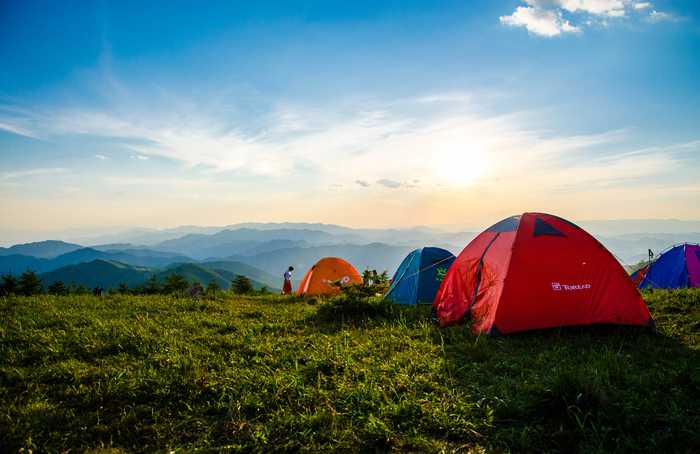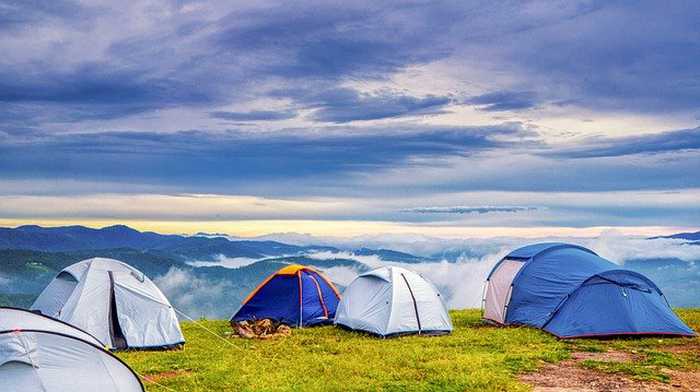You can go hammock camping in the winter! Hammocks are best suited for cold-weather camping in comparison to tents as you’re up and away from the ground. This keeps you away from the snow, allowing you to retain your warmth whilst tucked away in your hammock.
How do you keep a hammock warm in the winter?
There are a few different ways to keep a hammock warm in the winter. One is to wear warmer clothing. This can help somewhat, but if it’s really cold out, you’ll want to take some additional steps.
Another way to stay warm is to insulate the bottom of your hammock with a foam sleeping pad, an insulated inflatable sleeping pad, or an insulated quilt that hangs on the outside of your hammock. This will help trap heat and prevent it from escapes through the bottom of the hammock.
Finally, make sure you have a good camping blanket or two handy. These can be used to cover yourself while you’re in the hammock, and will add another layer of insulation.
At what temperature do you need an Underquilt for hammock camping?
If you’re hammock camping, you’ll need an underquilt when the temperature drops below 70 degrees Fahrenheit. I use a 20 degree underquilt all year round, and vent it as needed. I’ve never slept in a hammock without an underquilt, so I can’t imagine doing so in colder weather.
Do you need an underquilt in summer?
Yes, you need an underquilt in summer! Here’s why: It’s always better to have it and not use than to not have it and end up sleeping cold. For me, I always pack a light weight summer/spring rated under quilt on all my summer hangs. There’s been times when it wasn’t needed but I still had it with me. But usually sometime during the night, I’d need it.
How cold is too cold for hammock camping?
If you’re a fair weather hammock camper, you probably opt for a tent when the temperature drops below 32 degrees. But if you’re interested in hammock camping in colder weather (some have even braved -40 degrees), there are a few things you should know before taking the plunge.
First of all, ease into it. Don’t try to camp in sub-zero temperatures right off the bat. Do your research and be prepared with all the right gear. This is especially important if you plan on camping in very cold or windy conditions.
Some essential items for cold weather hammocking include a good sleeping bag, an insulated pad, and proper clothing layers. It’s also important to choose a campsite that offers some protection from the elements, such as trees or cliffs that can block the wind.
How do you keep a winter hammock warm?
If you want to keep your winter hammock warm, there are a few things you can do. First, choose your spot wisely. Wind is your enemy when winter hammocking, so try to find a sheltered spot.
Second, get mummied. That is, tuck all the edges of your sleeping bag around you so that no heat escapes. Third, use a multipurpose liner. This will add an extra layer of warmth and protection from the cold.
Fourth, use a pillow protector. This will help keep your head and neck warm while you sleep. Fifth, tarp the warmth to trap the warmth. That is, put up a tarp over your hammock to create an insulated space. Sixth, use a sleeping pad for sleeping warmth.
Sleeping on bare cold ground will only make you colder, so using a pad will help keep you warmer. Seventh,DIY insulating Pad. You can make one yourself by filling a sock with rice and tying it off at the end. Eighth , Sleeping Bag Pod.

Is hammock camping warm?
Yes, hammock camping can be warm – especially if you use an underquilt. Underquilts are basically insulated blankets that hang underneath your hammock, and they’re much more effective than a regular blanket at keeping you warm. Plus, they don’t compress the insulation like a sleeping bag would, so you stay nice and toasty all night long.
How cold before you need an underquilt?
As the temperature starts to drop, you may be wondering if you need an underquilt for your hammock. A traditional hammock will not be enough as you should at least be using a sleeping bag with a sleeping pad. When the temperature reaches 50 degrees, an underquilt is almost a requirement.
Can you hammock in the cold?
Yes, you can go hammock camping in the winter! In fact, hammocks are best suited for cold-weather camping in comparison to tents. This is because you’re up and away from the ground in a hammock, which keeps you away from the snow and allows you to retain your warmth.
How do you heat up a hammock?
There are a few different ways you can heat up your hammock to make it more comfortable in colder weather. One way is to insulate the bottom of your hammock with a foam sleeping pad, an insulated inflatable sleeping pad, or an insulated quilt.
This will help keep the warmth in and prevent you from losing heat through the bottom of your hammock. Another way to stay warm is to wear warmer clothing.
Layering up with socks, long underwear, and a hat can help trap heat and keep you comfortable even when it’s cold outside. Finally, consider using a portable heater or hanging a lantern inside your hammock enclosure to create additional warmth.
Is hammock camping warmer?
There’s nothing quite like hammock camping. Sleeping suspended above the ground in a cozy cocoon of fabric is one of the best ways to enjoy nature while getting a great night’s sleep. But some campers worry that sleeping in a hammock will be colder than sleeping on the ground. So, is hammock camping warmer?
Here’s what you need to know: Hammocks are actually quite good at insulating campers from the cold. Because your body is not in contact with the ground, you don’t lose heat as quickly as you would if you were lying on a cold surface. In fact, many campers find that they stay warm all night long when they’re properly positioned in their hammocks.
One thing to keep in mind, however, is that wind can cool down your campsite quickly. If it’s a breezy night, make sure you have your tarp set up so that it blocks the wind from reaching your hammock. This will help trap warmth and prevent you from getting chilled during the night.
How do you heat a hammock?
If you want to stay warm in your hammock, one way to do so is to insulate the bottom of the hammock with a foam sleeping pad, an insulated inflatable sleeping pad, or an insulated quilt. This will help keep your body heat from escaping through the bottom of the hammock.
How do you keep an ENO hammock warm?
There are a few ways to keep an ENO hammock warm. One way is to use a foam sleeping pad, which will help insulate the bottom of your hammock and keep you warmer. Another option is to use an insulated inflatable sleeping pad, which will also help keep you warm. Finally, you can use an insulated quilt that hangs on the outside of your hammock. This will provide additional insulation and help keep you warm.
Is a hammock warmer than the ground?
There are a few factors to consider when trying to answer the question of whether a hammock is warmer than the ground. First, any time of the year, the air can be colder than the ground. This means that if you are sleeping in a hammock, you may be more exposed to cold air and wind than if you were sleeping on the ground.
Additionally, another possible challenge for hammocks is wind. Once again, laying on the ground on a pad- especially in a tent- even high winds are not going to be much of a problem for your back warmth. All things considered, it is difficult to say definitively whether one option (hammock or ground) is unequivocally warmer than the other.








